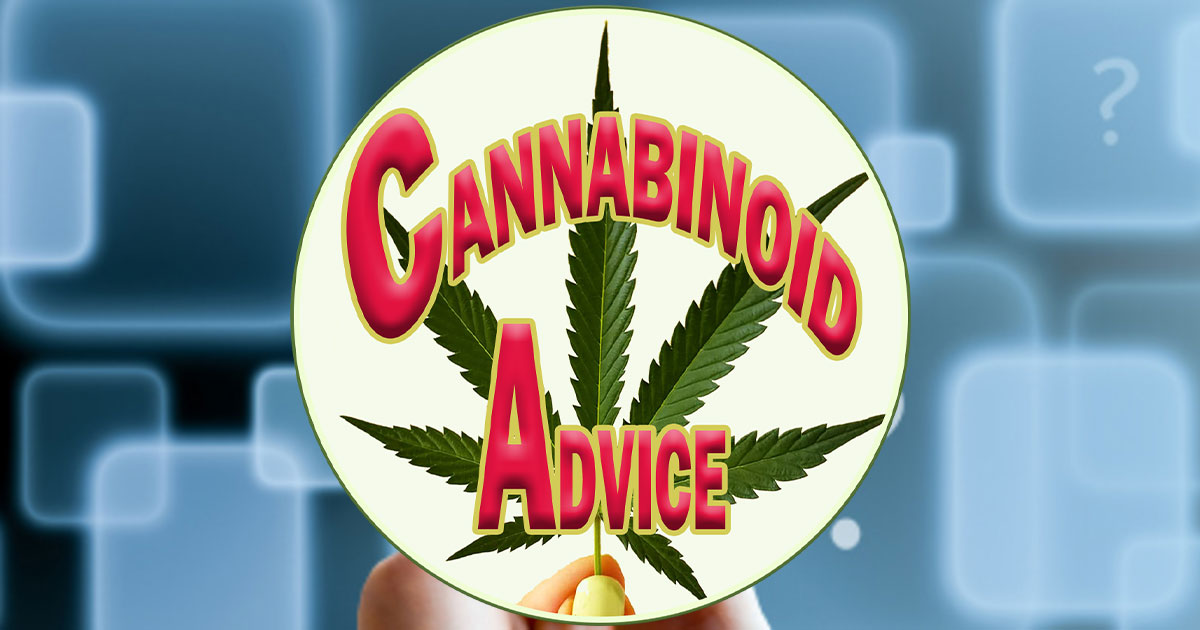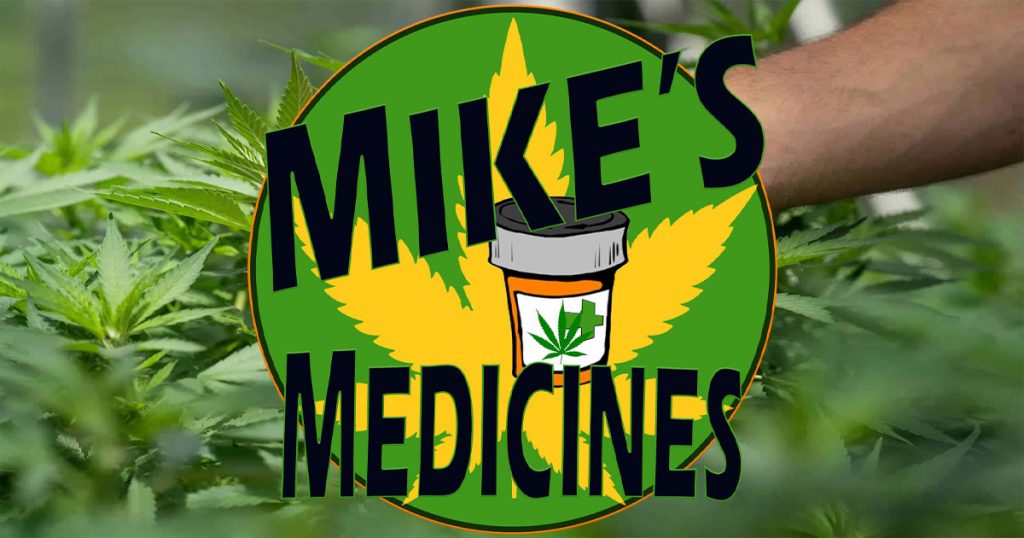By: Bojana Petkovic, Guest Columnist for Mike's Medicines
Marijuana is no longer reserved for hush-hush talks, but informed, open discussions – no matter if you are a marijuana supporter or not. On the one hand, federal law does not make a difference between marijuana and LSD, and marijuana possession arrests are still very frequent (especially for a certain part of the population). On the other, marijuana statistics supporting its health benefits helped turn it into a prescribed medicine besides being a relaxation aid.
The majority of Americans are in favor of it being fully legalized, at least for medical purposes. Also, even if you are not too fond of cannabis, you are bound to be impressed by the industry’s financial stats and job opportunities.
In order for you to gain a better insight, we’ve collected a plethora of riveting stats and facts you have to know about marijuana. We’ve presented them all in the following infographic and elaborated on some of them in the article below.
Key Marijuana Facts and Statistics to Know in 2020
- Medical marijuana helped over 90% of the people who were using it.
- Marijuana is the second most frequently found substance in drivers’ bodies after serious traffic accidents.
- $326 is the average price for 1oz of high-quality marijuana
- There are more marijuana smokers than tobacco smokers.
- Marijuana is not a gateway drug.
- The most expensive marijuana is sold in the District of Columbia.
- 24% of young adult Americans use marijuana.
- At the moment, medical marijuana is legalized in 33 states.
- The US government is trying to stop medical marijuana legalization.
- No one has still died of a marijuana overdose.

Marijuana Use Statistics
1. The United Nations report there are 183 million marijuana users around the world.
(Civilized)
These marijuana usage statistics could be even larger. The United Nations’ World Drug Report for 2017 suggests the real figure may be closer to 238 million.
2. In 2017, one in seven adult US citizens was reported to use marijuana.
(Reuters)
Overall, smoking marijuana continued to be the most popular way to enjoy its effects while vaping and edibles were the preferred way of consumption in marijuana-legal states.
3. In 2018, marijuana was the most used illicit drug in the country.
(DEA)
Not only is marijuana used in all 50 states, but it is illegally cultivated in all of them, too. Due to the large consumption and interest, a large amount of marijuana is (illegally) imported. Mexico is the biggest marijuana supplier for the States.
4. 24% of young adult Americans use marijuana.
(Statista)
24% of Americans between the age of 18 and 29 are said to use marijuana, making this the age group with the largest percentage of marijuana users.
5. US seniors are the fastest-growing group of marijuana consumers according to marijuana statistics.
(Guardian)
Apparently, marijuana consumption is one area immune to ageism. Americans over 50 years old are more and more turning to alternatives to their prescribed medicines. The legalization and appeal of marijuana products, such as vape pens, have inspired a more relaxed attitude among seniors towards marijuana use.
6. There are more marijuana smokers than tobacco smokers.
(RECO)
About 37 million Americans use marijuana in some form every month. This is a higher figure than the number of active tobacco smokers.
7. Marijuana reduces alcohol consumption.
(Forbes)
In states where marijuana has been made legal, alcohol sales have shown a significant drop of 15%.
8. Colorado marijuana users are very industrious.
(CDOR)
Marijuana legalization statistics tell us that in the year 2014, one-third of Colorado pot users were responsible for 87% of marijuana demand.
9. In a 2014 study, 60% of marijuana users were men.
(WebMD)
There is also some evidence in marijuana statistics that women have become keener on marijuana usage, but it is unclear if there has really been an increase, or whether women feel more at ease today admitting marijuana usage.
10. Marijuana has a different effect on users regarding their gender.
(NIDA)
Men tend to get more “high”, whereas women are more prone to memory impairment. Also, women tend to feel an increased appetite more than men. However, men are generally more interested in trying illicit substances than women, and therefore more prone to visiting emergency rooms.
Medical Marijuana Statistics
11. In 1996, California became the first state to legalize medical marijuana.
(Medical Marijuana, Inc.)
From then on, more states have followed suit, and the passing of the Farm Bill is a positive sign even more states will join. One species of cannabis has been made legal industrial hemp, but we are still waiting for marijuana to be approved on the federal level.
12. Medical marijuana helped over 90% of the people who were using it.
(Washington Post)
According to a survey done in California, 92% of medical marijuana patients confirmed marijuana helped them with their condition.
13. At the moment, medical marijuana is legalized in 33 states.
(Vox)
We are still waiting for more statistics on marijuana and scientific research to prove medical marijuana advantages. However, scientific studies require special approval.
14. The US government is trying to stop medical marijuana legalization.
(Medical Marijuana, Inc.)
The States still have a long way to go. It was only in 2014 that the Rohrabacher-Blumenauer Amendment prohibited the US Department of Justice to use federal funds for discouraging states from implementing medical marijuana laws on their own.
15. Medical marijuana statistics report 84% of Americans to believe medical marijuana should be legalized in all states.
(Business Insider)
Health benefits are becoming more prominent, and even 61% of Americans are for legalizing marijuana completely. Certain types of CBD oil have particularly been praised
16. On average, a medical marijuana user spends $136 on one purchase, which is made every 10 days.
(GREEN Entrepreneur)
This is much more than a recreational user’s spending ($49). They also tend to use it less frequently (every 14 days, on average).
17. In 2018, California entered marijuana statistics as the state with the highest number of medical marijuana patients.
(Statista)
915,845 Californian patients had their medical cards and were allowed to use marijuana for treating their state.
18. Severe pain is the most frequent reason for taking medical marijuana.
(CDPHE)
According to Colorado marijuana statistics, the top reported condition for which patients requested medical marijuana treatment was extreme pain.
Marijuana Criminal Statistics
19. The War on Drugs was declared by President Nixon in 1971.
(Guardian)
The war on drugs was only a tool to deal with antiwar protests and associate hippies with cannabis use in order to arrest them more easily. Similarly, African American arrests were made more feasible by associating them with heroin usage.
20. In the US, marijuana is regarded as dangerous as heroin or LSD.
(DEA)
Marijuana is enlisted as a Schedule 1 drug. The US Drug Enforcement Administration (DEA) still holds the opinion that marijuana (especially the Indica Species) has no currently accepted medical use and is prone to substance abuse.
21. Marijuana is the second most frequently found substance in drivers’ bodies after serious traffic accidents.
(Drug-Free World)
Right next to alcohol, marijuana is the second most frequently found substance in the bodies of drivers involved in fatal automobile accidents. According to marijuana driving statistics, if a driver involved in fatal car crashes has some kind of substance in their blood, it is most probably alcohol, but marijuana is a close second.
22. One marijuana bust happens every 48 seconds.
(Forbes)
Despite the legalization efforts, the number of arrests is only getting higher. Out of all the drug arrests in the USA in 2017, marijuana incarceration statistics show marijuana made up for almost half of it.
23. You are more likely to get arrested for marijuana possession if you are an African American.
(Baltimore Sun)
The harsh racial disparity is even more shocking if you know the fact there is no data confirming African Americans are larger consumers of marijuana than any other minority or majority.
24. Based on marijuana arrest statistics, you are more likely to get arrested for possession if you live in Texas.
(Salon)
According to data for 2016, the state of Texas is the rising star in marijuana prison statistics. Even more shockingly, out of all the marijuana arrests the police made that year, 98% of them were for possession only. It seems a minor case, but the consequences are serious, including a lifetime criminal record.
25. Over 650,000 people were arrested for violating a marijuana law in 2017.
(Drug Policy)
Despite the fact that the US is making progress when it comes to marijuana legalization, there still hasn’t been a significant decrease in marijuana crime statistics.
26. $3.6 billion were spent on enforcing marijuana possession laws.
(Business Insider)
Based on a report by the American Civil Liberties Union, this is how much it cost US citizens in 2010. The figure for today is expected to be even higher.
Marijuana Addiction Statistics
27. 6.3% of Americans have experienced cannabis use disorder (CUD) at some point.
(NIH)
About 6 million Americans dealt with CUD in 2015. Only 7% of them received some kind of treatment. Cannabis use disorder is characterized by adverse effects on personal and professional life, craving, withdrawal, and a lack of control.
28. People using marijuana are 3 times more likely to become addicted to heroin.
(CDC)
Marijuana user statistics have shown that there is a chance of becoming addicted to heroin if one is already suffering from cannabis use disorder (CUD). Alcohol addicts are less prone to it (two times more likely), but marijuana is nowhere near prescription opioid painkillers – those addicted to painkillers are 40 times(!) more likely to get addicted to heroin.
29. Marijuana is not a gateway drug.
(NIDA)
Marijuana gateway drug statistics tell us that even though people using marijuana may turn to drug abuse, there is no uniform tendency. Otherwise, it could be said for alcohol to be a gateway substance, too.
30. Chronic marijuana usage can cause a decrease of 8 IQ points.
(NCBI)
People who started smoking marijuana as teenagers and continued to do so when they became adults lost an average of 8 IQ points between the ages of 13 and 38. This goes for extreme consumption only. Whereas marijuana’s effects on adults can be very beneficial, the effect on young teenagers is always detrimental.
31. Smoking marijuana can increase the heart rate for up to 3 hours afterward.
(NIDA)
Among other marijuana side effects are impaired memory and movement, altered senses, moodiness, difficulty in problem-solving and thinking.
32. Marijuana is not safe for pregnant women.
(Today’s Parent)
Despite the fact that marijuana is very helpful for reducing nausea, smoking marijuana during pregnancy statistics confirm marijuana is not recommendable during pregnancy. It can reduce the oxygen flow to the baby, make the placenta more penetrable and allow for a part of the THC content to harm the baby.
33. There are no marijuana death statistics to report since no one has ever died of a marijuana overdose.
(Drug War Facts)
Among a plethora of substance abuse deaths, marijuana stats still have not recorded one case in the US in which a person died due to a marijuana overdose.
34. It is practically impossible to die from a marijuana overdose.
(Greencamp)
According to the United States Department of Justice Drug Enforcement Administration marijuana deaths statistics, one would have to take 40,000 times more marijuana in order to die from it. This equals consuming 1,500 pounds of marijuana within 15 minutes or smoking between 20,000 and 40,000 about average size joints in 20 minutes.
Marijuana Business Statistics
35. $326 is the average price for 1oz of high-quality marijuana.
(The Spectrum)
If you wish to enjoy a decent joint, this is how much you should have with you.
36. The most expensive marijuana is sold in the District of Columbia.
(Statista)
For 1 ounce of pleasure or medicine, you will have to pay $600.7 on average.
37. According to marijuana statistics from 2017, sales of medical marijuana were larger than sales of Oreo cookies.
(Green Entrepreneur)
In 2017, medical and recreational marijuana sales were almost 9 times bigger than the sales of renowned cookie brands. By now, they may have even surpassed McDonald’s.
38. Americans spend around $40 billion on marijuana every year.
(Guardian)
And will most probably continue to spend even more on legal and illegal marijuana. Due to making marijuana more accessible and it becoming a health and wellness trend, we can expect statistics about marijuana to show us a much higher figure in the not-so-distant future.
39. The global marijuana market showed an increase of 37% in 2017.
(Forbes)
If you are unsure which business to invest in this year to achieve great revenues, the marijuana business may just be the one for you. Check the stocks and shares of the biggest marijuana companies worldwide and invest in your future.
40. The marijuana industry earned $13.8 billion in 2018, which is almost 4 times more than in 2017.
(Fortune)
Marijuana is a real billion-dollar industry. The sales were a “mere” $9 billion in 2017, but it still equaled the annual revenue of the renowned diapers brands Pampers, or the total snack bar industry.
Conclusion
Be it marijuana usage, benefits, revenues, or marijuana crimes statistics, the US will continue to be an active participant in studies and analysis. First of all, due to its large population. Secondly, the government has finally shown some greater initiative for legalizing marijuana. Nevertheless, recreational or not, marijuana usage is not to be taken lightly. The attitude towards marijuana is changing on the federal level as you are reading this so we can expect some more exciting statistics to arrive at our pages soon enough.
Marijuana statistics will continue to amaze and shock us going forward as this industry rapidly grows.
Bojana Petkovic, from loudcloudhealth.com
A cannabis enthusiast, fascinated by the plant’s healing powers and the ever-changing world of the marijuana industry, trying to work out what is going on and let you know all the fun details — that’s my mission here. Keeping you high and healthy!
It’s always nice to get insight from other sources. Bojana made contact with me with the desire to have her work published in Mike’s Medicines so here it is for you all to enjoy. While some may look at this infographic and the article and think ‘we should be calling it cannabis’ – keep in mind that there’s a global movement going on for ‘medical marijuana and it was here in the U.S. that the word was first used. First, our government coins a word to use in a derogatory way and then we legalize it – now an industry wants everyone to use the word cannabis after the balance of the world has grown used to other terms. Semantics aren’t going to heal the nations – the plant is. I’m thankful to have Bojana supply her content and to have input that’s a bit different than our norm.
-Mike Robinson, Cannabis Patient and Founder, Global Cannabinoid Research Center. But, most of all, Genevieve’s Daddy
Sign up to receive informative and exciting email updates from Mike's Medicines!
You can sign up for our mail list here:
Didn't find what you are looking for?
Find exactly what you want to when you want it.
Browse through our archives by date, category or by entering a topic in the provided search field.
Archives
Categories
More to come as we have time to add them – there’s 100’s of additional publications!

We’ve made it easy for you to read Mike’s Medicine Blog or visit any of the Menu items right from here. It is that simple! Explore Mikes Medicines by clicking on the button below:

Read about how Cannabis Compassion and love created Mike’s beautiful family, the Cannabis Love Story inspires millions daily:
Genevieve’s Dream is all about her love for the Carousel coupled with her Cannabinoid Medicine journey – read more and make contact if you’re interested in collaborating with Mike!
The Global Cannabinoid Research Center is a trusted source for education, R&D, and more – make contact with us to collaborate.






